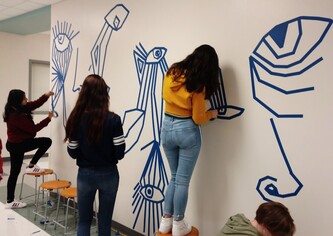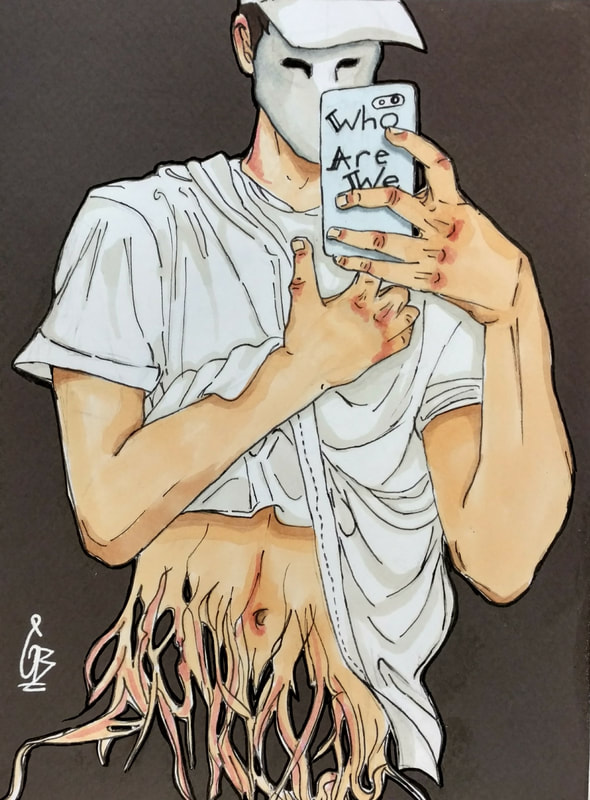|
Many terms come to mind when I think about what I experienced six years ago when I left an elementary TAB classroom I loved for a high school across the county. "Dive", "jump" and "plunge" were all considered for the title of this post. Ultimately, I chose "shift" because that's what I had to do as a teacher in order figure out how best to teach my new older students. "Shift" is also what my students have to do when they encounter my course structure, which is often unlike anything they've ever known. Another shift that was necessary was a cultural one. My K-5 schools, where I had run a TAB program for three years was mostly Black and Latinx, with around 90% of students qualifying for free and reduced lunch. Test scores were low and bring them up was a constant focus of multiple weekly meetings and observations. This high pressure resulted in frequent teacher and administrative turnover. However, the students were wonderful and fearlessly creative. My art program was thriving and I thoroughly enjoyed the instructional part of my days. It was just the other parts that started to wear on my soul. On the other hand, my new high school was mostly white, affluent and boasted a 93% graduation rate. I clearly remember my mouth falling open when data was addressed for the first time at a staff meeting by discussing our goal of moving from a 93% graduation rate to a 95% one. I know now, first hand, how that two percent difference impacts actual lives, but at that time I could not wrap my head around worrying about scores that were in the 90's when the school I just left had less than 50% passing end of grade tests. Another challenge for me was how often the staff was told we were doing well after coming from a place where I was asked to work ten times harder and constantly told that it wasn't enough. A big part of the shift from elementary to high school, for me, was coming to terms with the painful inequities that exist in public education. Now, about the teaching. I had dreams of sunshine and rainbows, of my wonderfully self-motivated elementary students, but bigger and with more developed skills and attention spans. If you know anything about teenagers, you probably have guessed that my first day was a rude awakening. On the first day of school, I excitedly explained the self-directed work I'd envisioned for the semester I was met with looks of scepticism and hostility. Finally a senior raised his hand and asked "Just tell us what to do to get an A." And so started years of figuring out how to access the power and joy of the elementary TAB classroom for older students. The Open Art Room, co-authored by me and Ian Sands about our work together was part of it, and Making Artists, publishing next year through Davis Publications is the continuation. Below you'll find some of the most important things I've learned about working with secondary students, leach linked to more in depth information. 5 Lessons I Learned as I Shifted from Elementary to High School
productive struggle by providing a decision making structure to teach how to make choices. I use my Artistic Thinking Process for this. Many of your students will need it or something like it.
4. Their friends mean everything. Social relationships are hugely important at the secondary level and when teachers harness that through collaborative learning and socially meaningful events, magic happens 5. They can ALL be successful you give them a safe place to fail and the tools to fly. This post describes my beginning of the year assessment as compared with the end of the year. SO MUCH GROWTH - not just from some, but by every student.
1 Comment
|
Mrs. PurteeI'm interested in creating a student student centered space for my high school students through choice and abundant opportunity for self expression. I'm also a writer for SchoolArts co-author of The Open Art Room. Archives
December 2019
Categories
All
|









 RSS Feed
RSS Feed